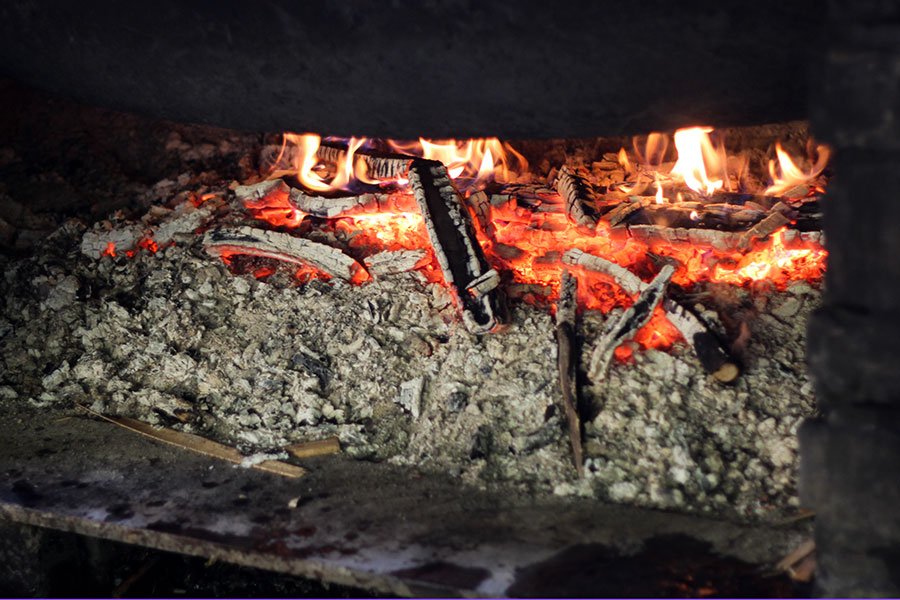How to Dispose of Fireplace Ash (And How to Reuse it)
We’re only halfway through burn season, and if you’re burning wood in your fireplace, insert, or stove, you likely have a lot of ashes to show for it. In order to maintain a safe fireplace, you must remove the ash from your firebox regularly, otherwise, you’re looking at a crowded fireplace and an inefficient fire. Removing the ashes may be a chore in itself, but figuring out what to do with your ashes is another challenge altogether.
Removing Your Fireplace Ash
Before removing your fireplace ash, it’s important to make sure you have the right tools and accessories to prevent burns and accidental fires. It may be best to remove ashes once the fire is out, but in many regions and in many homes the fire burns daily. If this is the case, you may need to remove ashes daily. In order to do so safely, you’ll need leather gloves, long-handled tools such as a fire poker and shovel, and a metal bucket with a long handle for carrying.
When removing your fireplace ash, wear your gloves to prevent burns to your hands or arms. Then use your fire poker to move logs, embers, and coals before removing the ashes with your shovel. Place the ashes into a metal bucket but be careful not to overfill. Keeping the gloves on, carry the ashes carefully outside and place it into a container to cool and store. Your ashes can be stored safely in a metal container with a lid such as a metal trashcan. Make sure this ash bin is kept at least 10 feet from your house, your firewood, or any other flammable material. Once the ashes cool in this air and watertight container, they can be discarded safely or reused for whatever purpose you see fit—and there’s a lot of them!
Using Ashes for Gardening/Landscaping
Ashes produced from wood fires have a specific pH that is great for changing the pH in the soil. You can take advantage of this transformative power of ash by cultivating ashes into soil and compost. Beware of using too much, as it can make the soil too acidic too quickly. For best results, you can visit one of your local universities for soil testing (a service that is often free!). If you’re not interested in turning the soil, you can benefit from ashes in potted plants such as tomatoes. A little sprinkle here and there throughout the season can result in plumper, redder, and juicier tomatoes.
Ashes are also a great deterrent for garden pests. Sprinkle a thin later around the perimeter of the flower or vegetable garden to keep slugs and snails out. These ashes don’t have to be mixed in with the soil but will have to be replaced periodically, especially if you water your garden regularly.
Using Ashes in the Garage or Shop
You can keep ashes on hand in the garage or shop to clean up spills. Keep a bucketful of ashes to sprinkle onto oil and gasoline spills. They absorb the liquid and odors, then simply sweep up the mess. Keeping ashes around the driveway and patio area can also help during winter months. Sprinkle ashes onto sidewalks and driveways to melt ice and provide traction on slippery walkways.
Using Ashes in the House
You can clean with ashes, too! Add a little ash to water and shine silver, clean glass, and scrub stoves and ovens. Ashes provide just enough abrasiveness to clean stuck-on grime, but without the damage of a lot of strong cleaning products.
Ashes are especially helpful in cleaning the carbon stains from dirty fire-view windows. Whether you have custom glass doors on your fireplace, or standard fire-viewing doors on your stove or insert, you can use ashes and water to restore the beauty clarity as if new.
You can also use ashes in some unorthodox ways. For instance, you can filter water through ashes to create lye and use this natural lye to make soap the way the pioneers did it! Lye soap can be used for bathing, laundry, dishes, and more. If you decide to experiment with your own batch of lye soap, make sure you follow directions exactly and use appropriate gloves and tools to avoid chemical burns.
Ash Removal in Chico and Redding
Perhaps you don’t have an outside store for your wood ash. Many homes, especially those with masonry chimneys, have a built-in ash pit beneath the fireplace. This space is accessed by an opening at the back of the firebox and can hold many years’ worth of ash from the fireplace. If your fireplace has an ash pit, you may not use it or even know when it was used last.
Removing these ashes can be a dirty job and a dangerous one if you don’t know how to do it properly. For homeowners in and around Chico and Redding, California, the best option for your ash pit is to have it professional emptied periodically. This ash removal is not part of a standard chimney sweep, but your technician can check the ash pit during a chimney sweep or inspection to let you know whether or not it needs to be emptied.
If your ash pit needs to be emptied, or if your chimney or fireplace system needs any maintenance at all, it’s important to contact the professionals.
For all of your comprehensive chimney services and maintenance, call us to schedule an appointment.

